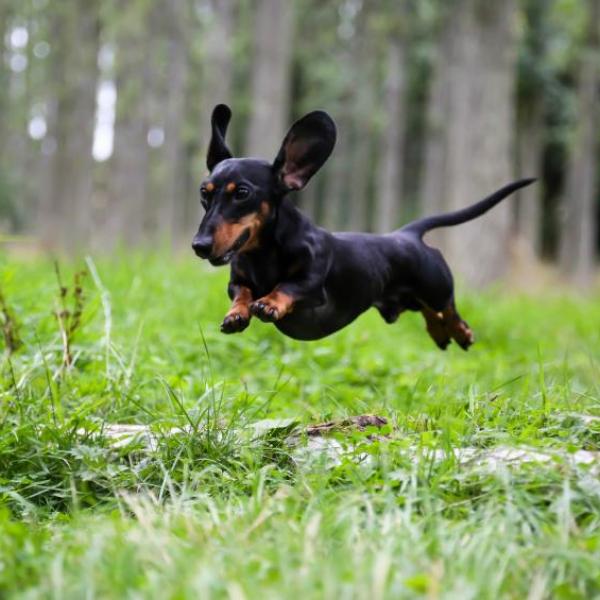Dachshund
Weight : 16 to 32 pounds
Height : 8 inches to 9 inches
Colour : Black, Black & Tan, Chocolate, Cream, Blue, Chocolate & Cream, Red, Tan
Life Span : 14 – 17 years
Temperament
Dachshunds are playful, but as hunting dogs can be quite stubborn, and are known for their propensity for chasing small animals, birds, and tennis balls with great determination and ferocity. Many dachshunds are stubborn, making them a challenge to train.
Dachshunds are statistically more aggressive to both strangers and other dogs. Despite this, they are rated in the intelligence of dogs as an average working dog with a persistent ability to follow trained commands 50% of the time or more. They rank 49th in Stanley Coren's Intelligence of Dogs, being of average working and obedience intelligence. They can have a loud bark. Some bark quite a lot and may need training to stop, while others will not bark much at all. Dachshunds are known for their devotion and loyalty to their owners, though they can be standoffish towards strangers. If left alone, many dachshunds will whine until they have companionship. Like many dogs if left alone too frequently, some dachshunds are prone to separation anxiety and may chew objects in the house to relieve stress.
According to the American Kennel Club's breed standards, "the dachshund is clever, lively and courageous to the point of rashness, persevering in above and below ground work, with all the senses well-developed. Any display of shyness is a serious fault." Their temperament and body language give the impression that they do not know or care about their relatively small size. Like many small hunting dogs, they will challenge a larger dog. Indulged dachshunds may become snappy or extremely obstinate.
 English
English Français
Français







